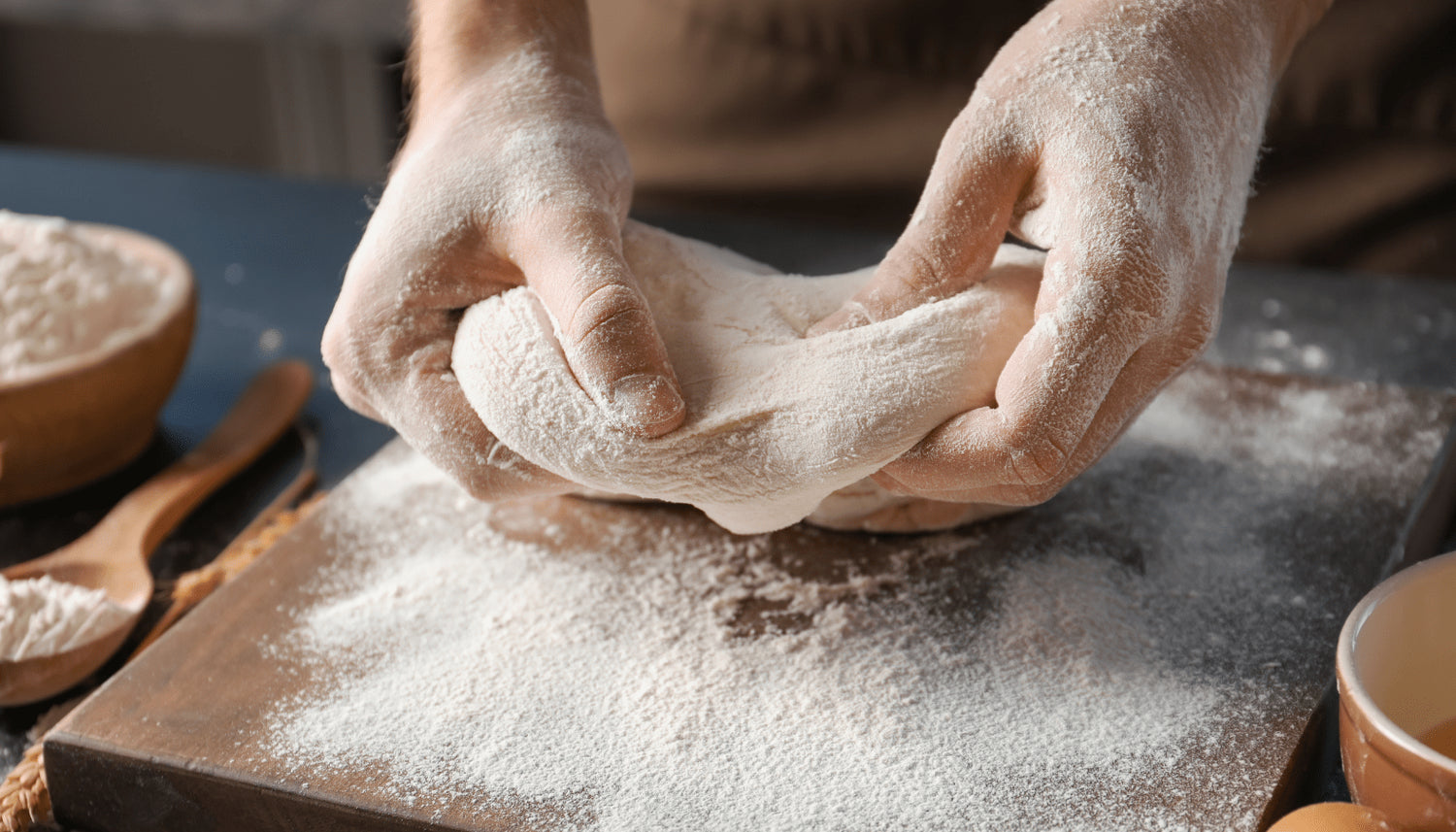Many people are not aware of how easy it can be or how beneficial it is to mill your own flour using fresh grain and a powerful stand mixer. That’s why we are here to help you learn more about the benefits of milling your very own fresh flour!
Elevated Nutrition: Commercial mills remove 30 percent of the wheat kernel, removing the most nutritious part of the grain to make white flour. Milling your own flour not only ensures that your flour is as nutritious as it can be, but it also has a wonderful taste that is lost to commercially made whole-grain flour.
Whole grain flour contains more nutrients, vitamins, and fiber than white flour. Whole grain contains the entire grain kernel which includes a portion of the bran, germ, and endosperm. The bran is the hard outer covering that surrounds the inner germ and endosperm. The germ is an embryonic seed and contains unsaturated oils. The endosperm is the largest part of the kernel, which is mostly starch. The bran and germ contain a number of nutrients that are not found in processed white flours.
These include vitamin E, folate, fiber, and antioxidants. The nutrients in whole grain flour come from the bran and germ. The nutrients are lost when these parts of the kernel are refined out of whole-grain flour. In addition, the high starch content of white flours increases the absorption of fat so more is stored in the body as compared to eating whole grains. Whole grains also have a lower glycemic index than processed grains and result in fewer blood sugar spikes and longer satiety that lowers appetite. White flour has been stripped of nearly everything that’s good for you because of the way it was processed.
Better Flavor: One of the most frequently asked questions we get from beginner bakers is “why does whole-grain flour make such better-tasting baked goods?”.
Many bakers are choosing to switch to freshly milled flour for their baking and often swear by the results of using freshly milled flour because their breads and baked goods made from freshly milled flour have better flavor and texture.
Freshly ground flour is alive, having its enzymes, nutrients, and fiber. Fiber provides structure and texture. The bran and germ add flavor and even a bit of sweet taste. You want as much as those vitamins, minerals, and fiber as possible to be passed on to the final product which will help make up for any missing ingredients. Freshly milled flour is what you need if you want a baked good with a greater depth of flavor. By using fresh flour you will get a creamier texture, more body, and better flavor.
Purity & Quality: Milling your own flour is one way to guarantee that you are getting exactly what you need in your food. There are many additives or preservatives that can come into the supply chain of food processing facilities and middlemen. This can have a devastating outcome on those who have allergies to certain products. Having freshly milled flour is not only an assurance of freshness but also an assurance that unknown ingredients will not be present in your flour.
When was the last time you bought a bag of flour? Did it say “fresh milled” on the bag? Most of us just aren’t sure. The truth is, even if you buy from a bakery, they have to have their flour delivered every 4-6 weeks. In between, it’s been sitting in a warehouse somewhere and is probably around a year old. Milling your own flour at home is an inexpensive way to ensure you are getting fresh pure flour. Fresh flour can be milled just before using, so no time is lost. This also ensures the germ of the wheat berry hasn’t been damaged during storage, preserving your flour’s nutritional value.
Saves Money: When you look at the rising costs of groceries, it’s clear that milling your own flour just makes sense. You can save money on your grocery bill by grinding your own wheat, corn, rice, etc into flour at the fraction of the price of store-bought flour. In addition to saving money, you can save it from spoiling longer by storing whole grains in airtight containers.
If you’re not familiar with emergency preparedness, it can cost hundreds of dollars to set up a dedicated emergency food storage containing the right amount of food and water. To avoid panic-buying these items at your local store (during the only hours that they’re actually open) what we suggest to do is prepare yourself for an emergency for half the price. One way to do that is by storing grains and legumes instead of flour and rice. You can save up to 80% of the cost while still preparing edible meals with food storage that lasts longer.








Leave a comment
All comments are moderated before being published.
This site is protected by hCaptcha and the hCaptcha Privacy Policy and Terms of Service apply.